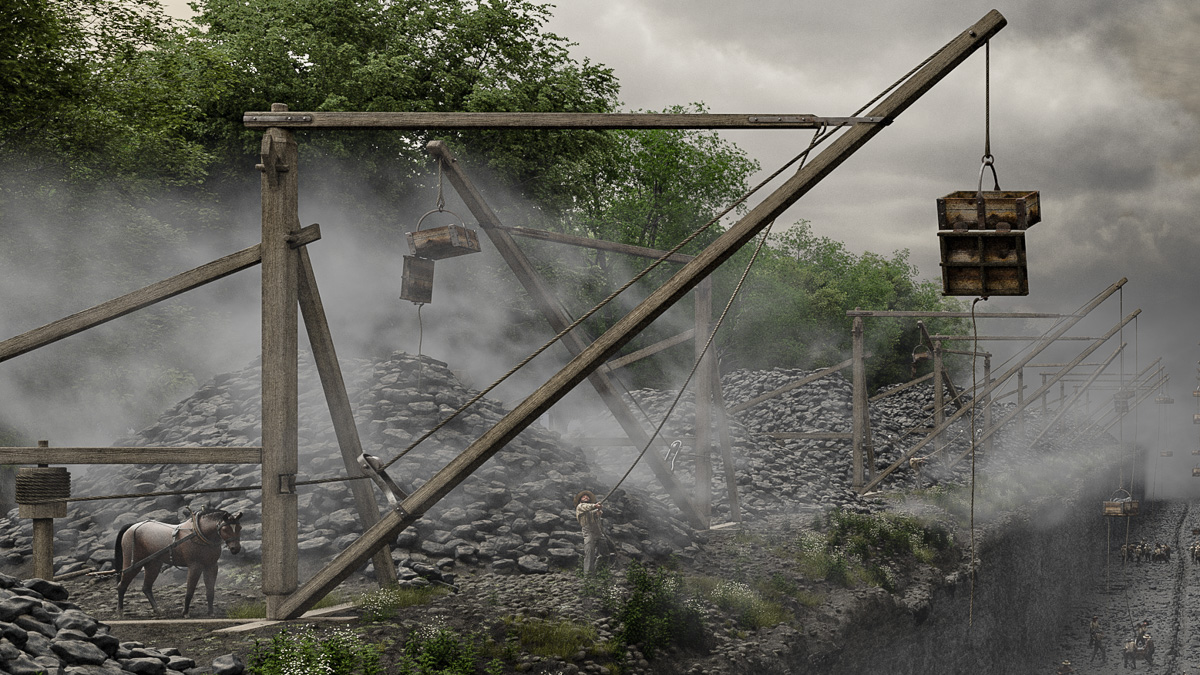
The Deep Cut Excavation scene has finally reached the final step: fixing mistakes, correcting small problems, and fine-tuning a few small details.

By summer 1824 work had been ongoing for several seasons, and in upstate New York it doesn’t take long for Mother Nature to start reclaiming lost territory. So a few species of foliage – hardy pioneers like ragweed and daisy fleabane – have been added to the grubbed surface on either side of the cut.

A narrow ditch, excavated by workers to drain away excess water, has been added to the floor of the cut. Dust clouds have been inserted and the position of the sun finalized at 9:50 a.m., June 15, 1824, just out of the upper left corner of the frame.

That will have to do it for now. In researching the scene I’ve been struck by how little we know about day-to-day work on the Deep Cut. The evidence is fragmentary and incomplete – bundles of invoices, a handful of eyewitness descriptions (some written years later), a single lithograph drawn “from life.”

Tantalizing clues to other details occur here and there, including references to horse-powered water pumps in contractor receipts and the canal commissioners’ reports, and the patent record for Darius Comstock’s excavator. But the clues aren’t enough to go on, so those details had to be omitted. This landscape is just a partial reflection, accurate but with a few missing pieces. The actual scene no doubt would have been a little busier and more chaotic.

